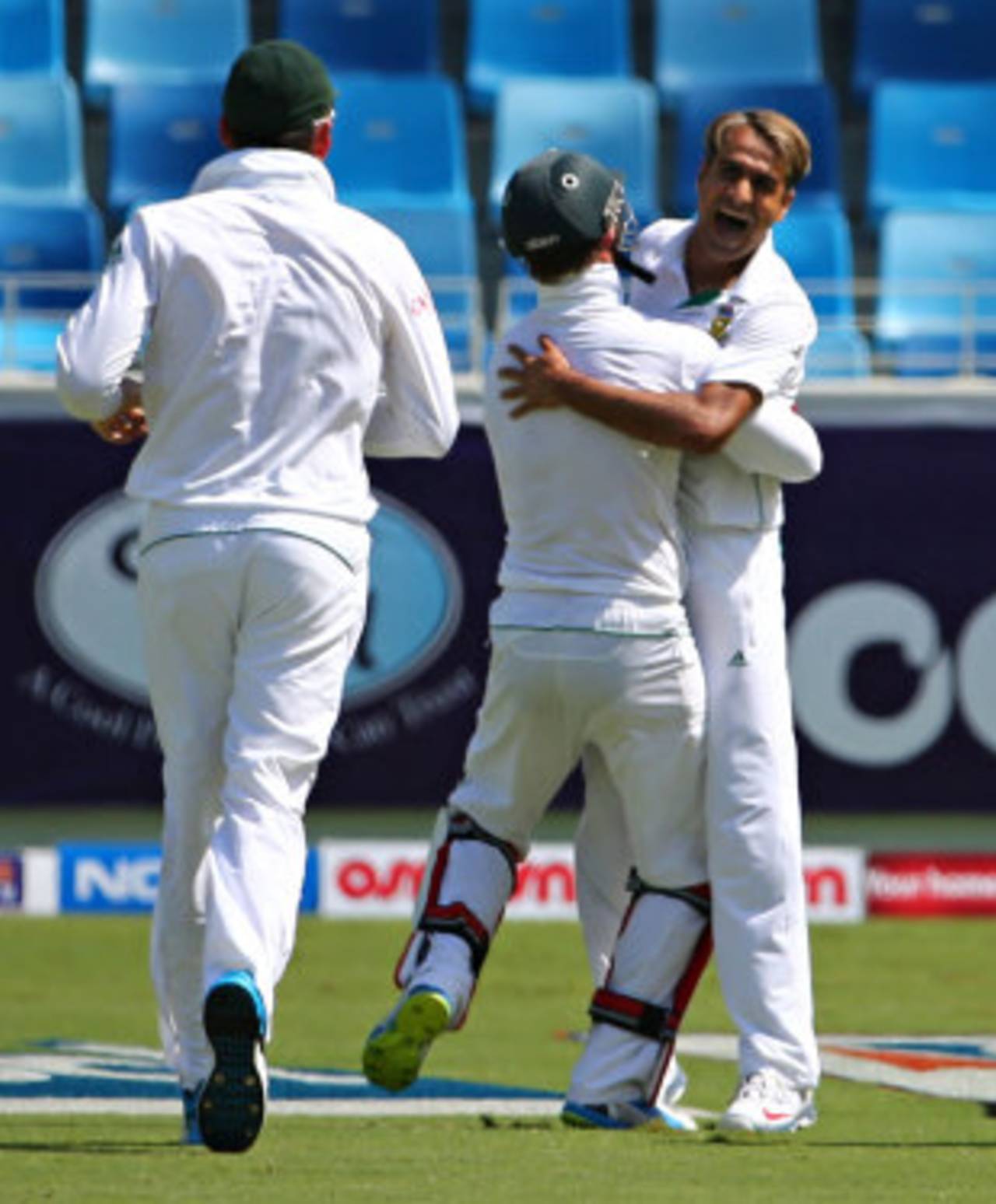It is a curious experience watching cricket in a neutral stadium as a neutral observer. In Dubai today, as South Africa took a probably-decisive grasp on the second Test against a Pakistan team that exacerbated the stranglehold by part-asphyxiating itself, I felt like a one-man Switzerland, without the gold reserves. It is a particularly curious experience when that stadium is well over 99% empty. At the start of play, there were no discernible spectators at all, if you exclude the various staff and the players' families. When the umpires outnumber the crowd, you know that ticket sales have been sluggish.
Dubai seems to me to be one of the world's odder places, an architectural and lifestyle fantasy built on literal, economic and metaphorical sand. An unattended Test in a perfect stadium on a lush green outfield in the desert might not be quite a crazy as an uninhabited archipelago of luxury counterfeit islands, or a fully-functioning ski-slope in a notoriously non-snowy part of the world, or a half-mile-high skyscraper in a city with a patently-obvious excess of ground space, but it is still almost rampantly odd.
Despite the emptiness - understandable on a working day, especially given the geographical inconvenience of the stadium, and depressingly far from unique in the modern Test game - and the oddness, matches here are absolutely critical for the mist-shrouded, bicker-threatened, financially-skewed future of the international game. Pakistan's current team is possibly the most prosaic it has fielded, but these matches, however sparsely attended, are the lifeline for a cricketing nation that has produced some of the most charismatic play and players in the game's history.
Fortunately, the stadium was soon fractionally filled by a delegation of wildly enthusiastic schoolchildren, intent on cheering every Pakistan run. Their vocal chords were not unduly exercised. In the face of a South African attack that was hostile, varied and skillful, Pakistan played a series of shots that veered between reckless and incompetent, often encompassing both.
Khurram Manzoor began the cavalcade of carelessness when he smeared at the second ball of the day, an alluring outswinger from Dale Steyn that tempted the first-Test centurion into mistaking himself for a peak-era Virender Sehwag.
To be fair to Khurram, it was a good outswinger - he could argue that by attempting to plank it to the cover boundary he at least made the ball fly into the slips faster and more awkwardly than if he had simply defended it. The ingeniously-difficulty-enhanced catch was pouched, however, and South Africa had an immediate initiative. In an hour of mayhem either side of lunch, Pakistan folded quicker than an overpriced ski and snowboard shop in a small Saharan village.
Sadly for Pakistan, such skittlings are commonplace. They have been bowled out for less than 100 seven times in their last 39 Tests, since July 2009. In their previous 338 Tests, over 57 years, they had failed to reach three figures only nine times. They last played a Test in their home country in March 2009. Clearly, this is not a vintage generation of Pakistani batsmen. Test cricketers must have become accustomed to playing largely to hypothetical crowds watching on distant televisions, and Pakistan's more so than most. But representing their nation only away from home or in the strange Emirati hinterlands, divorced from their supporters and the heart of their cricket, cannot have helped the collapsibility of Misbah-ul-Haq's men.
Since then, left-arm spinners have taken 11 five-fors for the pace-preponderant Proteas (121 have been taken by seamers). And people have been waiting for a legspinner to take a five-for for South Africa for longer than they have been waiting for a British monarch to abdicate.
Bruce Mitchell, opening batsman and part-time twirler, took five against Australia in Durban in March 1936; Edward VIII handed in his crown, sceptre and car keys and skedaddled with Mrs Simpson in December of that year. Since then, it has been a barren time for both South African legspinners and British abdication fans. Tahir changed all that. The world's eyes are now trained on Buckingham Palace, to see if the Queen suddenly starts spending a disconcerting amount of time gadding about with an American divorcé.
